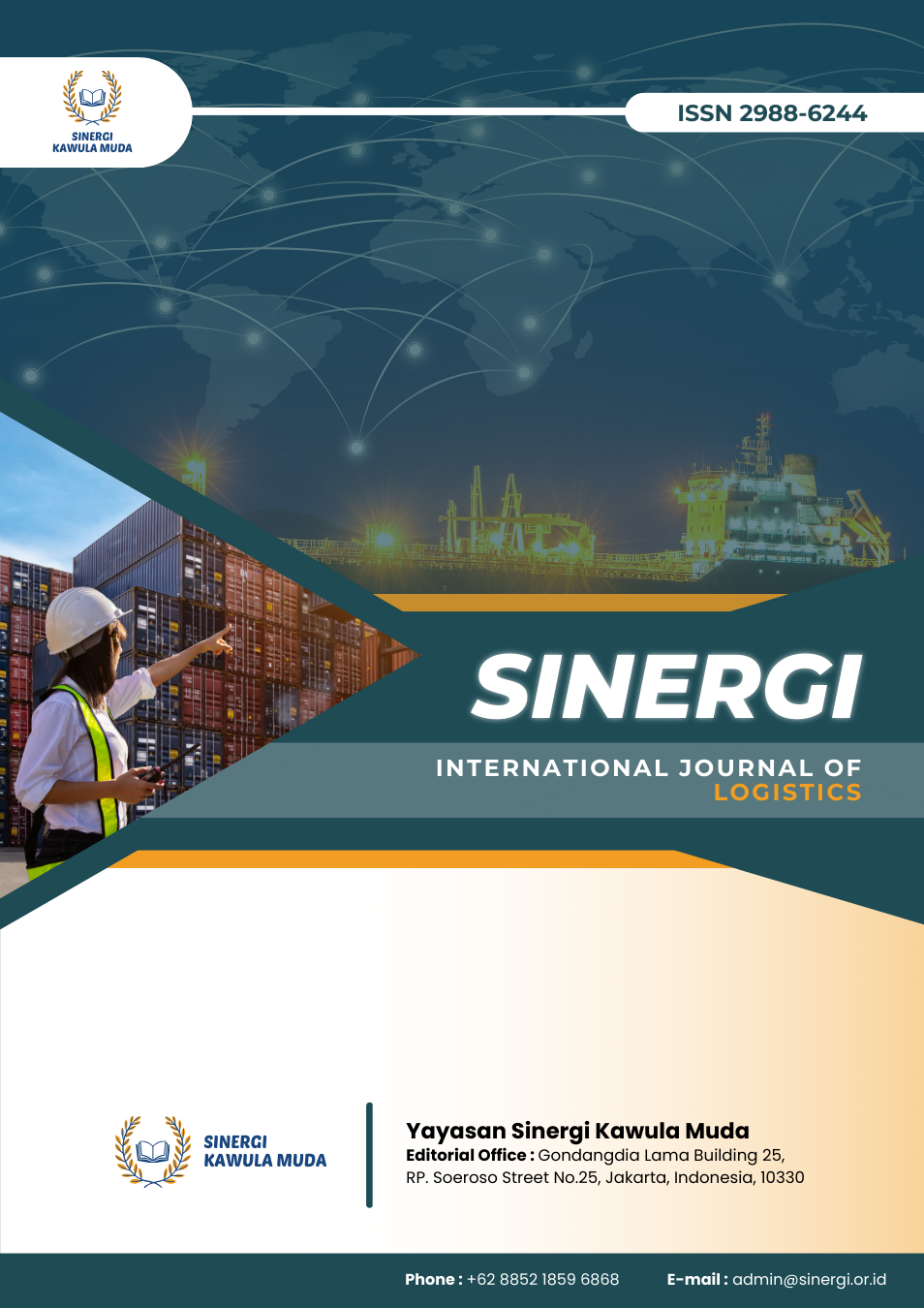A Narrative Literature Review on the Use of Augmented Reality in Logistics: Enhancing Training and Operational Efficiency
DOI:
https://doi.org/10.61194/sijl.v2i2.624Keywords:
Augmented Reality, Logistics Training, Operational Efficiency, Immersive Technology, Workforce Development, Digital Infrastructure, Supply Chain InnovationAbstract
This study explores the implementation of Augmented Reality (AR) in logistics training and operations, focusing on its effectiveness in improving technical skills, operational efficiency, and user engagement. The review analyzes peer-reviewed literature from major academic databases, using systematic search strategies with defined keywords and inclusion criteria. Key findings show that AR-based training significantly enhances conceptual understanding, reduces task completion times, and increases learner satisfaction. In logistics operations, AR contributes to improved order picking, warehouse mapping, and real-time inventory control, leading to productivity gains and cost reductions. These benefits, however, are context-dependent and influenced by systemic factors such as infrastructure maturity, workforce readiness, organizational culture, and regulatory support. The discussion emphasizes the need for integrated human-centric design, supportive policy frameworks, and targeted investment to overcome barriers to AR adoption. Practical strategies, including the use of proven AR platforms, public-private educational partnerships, and localized pilot implementations, are recommended to facilitate scalable and effective AR integration. Despite promising results, gaps remain in empirical field research and interdisciplinary perspectives, especially in low- and middle-income settings. The review concludes by underscoring the urgency of digital transformation in logistics and the central role of AR in equipping the workforce with future-ready capabilities. Strategic adoption of AR offers a pathway toward more adaptive, efficient, and resilient logistics systems.
References
Akbari, M., Sobhani, M., & Niknejad, N. (2022). The application of augmented reality in logistics: A framework for evaluation. Computers & Industrial Engineering, 165, 107947. https://doi.org/10.1016/j.cie.2022.107947
Albawaneh, S., Ayalew, Y., & Imran, A. S. (2023). Enhancing logistics training through immersive augmented reality environments. Journal of Transport and Supply Chain Management, 17(1), 1–15. https://doi.org/10.4102/jtscm.v17i1.814
Ginters, E., Edwards, G., & Karklina, G. (2020). Augmented reality trends in logistics: Market growth and key applications. Transport and Telecommunication Journal, 21(3), 224–234. https://doi.org/10.2478/ttj-2020-0018 DOI: https://doi.org/10.2478/ttj-2020-0018
Ho, M., Lee, Y., & Cheng, P. (2023). Cognitive ergonomics in augmented reality logistics systems: Reducing overload through adaptive design. Human Factors and Ergonomics in Manufacturing & Service Industries, 33(2), 178–190. https://doi.org/10.1002/hfm.20947 DOI: https://doi.org/10.1002/hfm.20947
Jütte, W., Müller, M., & Krause, D. (2023). Human-centric logistics: AR applications for improving safety and satisfaction. International Journal of Production Research, 61(7), 2356–2371. https://doi.org/10.1080/00207543.2022.2131537
Leffers, T., Svensson, C., & Hoppe, M. (2023). Digital infrastructure and augmented reality adoption in supply chains. Logistics, 7(1), 12. https://doi.org/10.3390/logistics7010012 DOI: https://doi.org/10.3390/logistics7010012
Maio, G., Ferrari, M., & Giacalone, D. (2023). Measuring task efficiency in AR-supported warehouse operations. Procedia Manufacturing, 59, 463–470. https://doi.org/10.1016/j.promfg.2023.02.061
Putz, L. M., Dietrich, C. A., & Heidenreich, S. (2022). Augmented reality in logistics: A systematic review and research agenda. International Journal of Physical Distribution & Logistics Management, 52(4), 381–403. https://doi.org/10.1108/IJPDLM-09-2021-0349
Rosenberger, P., Xia, X., & Liu, M. (2023). Privacy and data protection in augmented reality logistics: A policy framework. Journal of Business Research, 155, 113420. https://doi.org/10.1016/j.jbusres.2022.113420 DOI: https://doi.org/10.1016/j.jbusres.2022.113420
Salas-Pilco, S. Z., Ramos, M. V., & García-Peñalvo, F. J. (2023). Pedagogical effectiveness of AR training in vocational logistics education. Education and Information Technologies, 28, 3471–3490. https://doi.org/10.1007/s10639-022-11067-4
Sidiropoulos, G., Chatzopoulos, D., & Lalas, A. (2021). Integration of AR, IoT, and AI for warehouse automation: A case study. Procedia Computer Science, 181, 589–596. https://doi.org/10.1016/j.procs.2021.01.215 DOI: https://doi.org/10.1016/j.procs.2021.01.206
Sousa, M. J., Cruz, R., & Oliveira, P. (2023). Human factors in logistics AR systems: Satisfaction and usability. International Journal of Logistics Management, 34(2), 250–268. https://doi.org/10.1108/IJLM-06-2022-0231
Tadić, D., Arsovski, S., & Stojić, G. (2023). Economic assessment of AR investments in logistics SMEs. Engineering Economics, 34(1), 44–56. https://doi.org/10.5755/j01.ee.34.1.31048
Tubis, A., & Rohman, A. (2023). Challenges of adopting AR in developing countries’ logistics sectors. International Journal of Logistics Research and Applications, 26(5), 873–891. https://doi.org/10.1080/13675567.2022.2142349
Shah, D., & Naik, R. (2020). Enhancing warehouse efficiency using RFID-based smart systems. Journal of Technology and Operations, 6(2), 91–108.
Tao, F., Qi, Q., & Liu, A. (2018). Smart factory-based real-time inventory management system using RFID and AI. Journal of Manufacturing Systems, 48, 144–156. DOI: https://doi.org/10.1016/j.jmsy.2018.01.006
Vezzani, F., Bottani, E., & Vignali, G. (2024). Augmented reality in logistics: Performance evaluation of smart glasses. Computers in Industry, 153, 103901. https://doi.org/10.1016/j.compind.2024.103901
Vogel, J., Graser, A., & Zeigermann, D. (2017). Efficiency gains through AR-based warehouse navigation. Journal of Industrial Engineering and Management, 10(4), 685–702. https://doi.org/10.3926/jiem.2386
Wang, Y., Chen, K., & Li, Y. (2020). Assessing cost-effectiveness of augmented reality in logistics training. Journal of Enterprise Information Management, 33(2), 337–355. https://doi.org/10.1108/JEIM-01-2019-0029
Zhao, X., Xu, H., & Liu, Q. (2019). Sustainable logistics through augmented reality: Operational perspectives. Sustainability, 11(20), 5825. https://doi.org/10.3390/su11205825 DOI: https://doi.org/10.3390/su11205825
Żywicki, K., & Buń, P. (2021). Comparative study on training effectiveness using AR in warehouse logistics. Advances in Intelligent Systems and Computing, 1289, 136–146. https://doi.org/10.1007/978-3-030-55506-1_13 DOI: https://doi.org/10.1007/978-3-030-55506-1_13
Downloads
Published
How to Cite
Issue
Section
License
Copyright (c) 2024 Albert Budiyanto, Muhammad Muslim

This work is licensed under a Creative Commons Attribution 4.0 International License.





